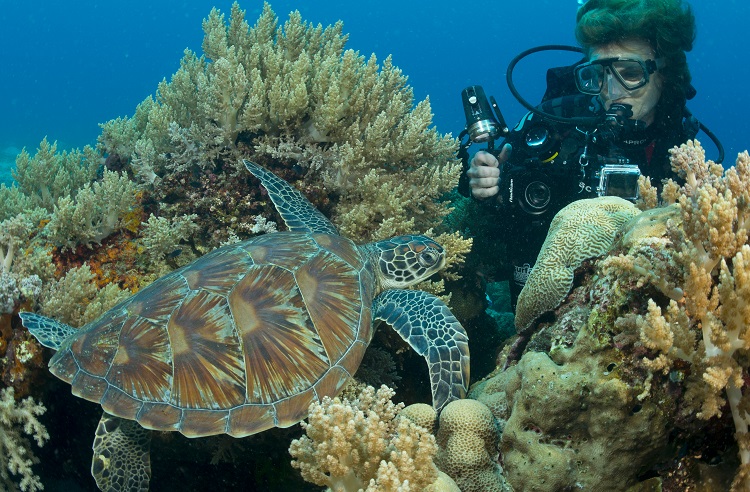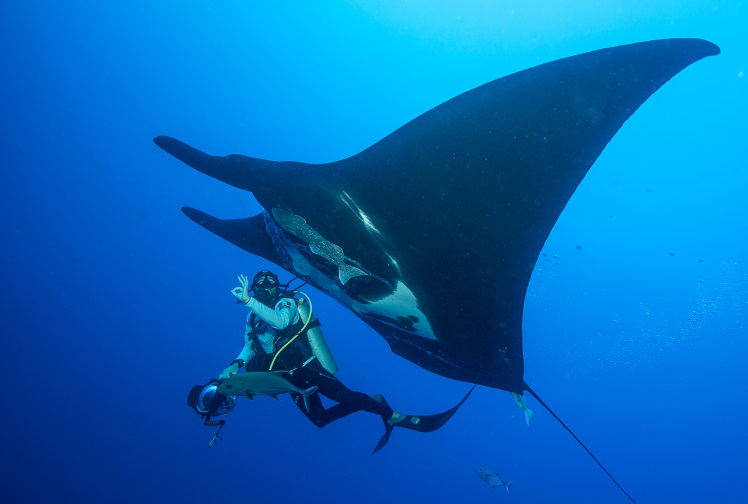Whale Shark - Rhiniodon typus
14-Apr-2011 Back to Image Gallery
Australia’s Ningaloo reef is famous for its annual congregation of whale sharks. I have run many dive tours there to rendezvous with them. Ultimately I conceived the idea for a documentary aired by discovery channel and produced by Andrew & Liz Wight, then joined their team as one of three cameramen to capture the footage. In the same year, 1994, I spent as much time in the water with whale sharks as I possibly could to capture a comprehensive portfolio of whale shark images commissioned by Australian Geographic Magazine. The challenge was to come up with a variety of images using every composition and lighting skill known to a highly experienced professional underwater photographer. There was also the hope that some natural behaviour could be captured. This image is one of many that ran in the magazine which included the front cover, double page spreads, fold out pages and a poster. This is the ultimate compliment to an editorial photographer!
Photo Data: Location: Ningaloo Reef, Exmouth, West Australia. Genre: Wide Angle Sunlight & Single Strobe. Photo Data: Nikonos V Camera with Nikonos 15mm Lens, Kodachrome Film ISO 64, Aperture Priority Mode. Exposure F8 at 1/90th second. Image by Kevin Deacon
Photo Hints: With this image I choose to use one strobe that would provide fill lighting to eliminate the strong sunlight patterns that normally occur on the subject. While these patterns are often artistic they tend to hide fine detail. I wanted this image to reveal all including eyes, gills, spots and stripes on the shark’s body. I had to get in the shark’s path to get within strobe range, then swim clear rapidly as the sharks tail swings side to side over a six meter swath and can easily break bones! One of my associates had several ribs broken when he didn’t get clear fast enough.
Interesting Facts: The whale shark is the world’s largest shark and because sharks belong to the family of fishes it is also the world’s largest fish! The spots and stripes on each whale sharks body are its fingerprint so individuals can be identified by these unique markings.



